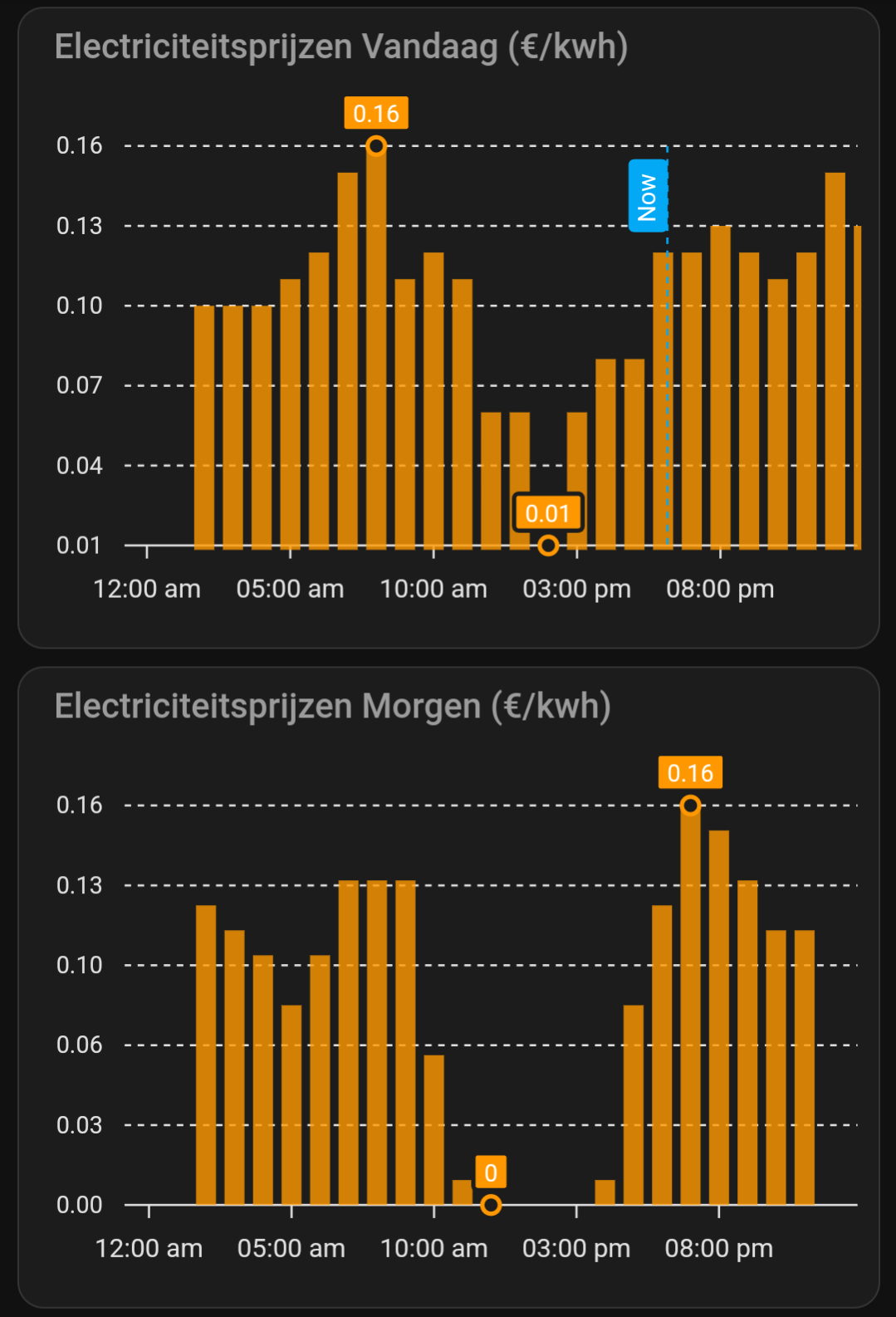My PGE bill is a little over 50c per kilowatt hour. Its starting to become like a second mortgage or car payment for some. Wondering what other people are paying for their power.
https://www.pge.com/assets/pge/docs/account/rate-plans/residential-electric-rate-plan-pricing.pdf
Well, California has some of the highest electricity rates in the US. IIRC the exceptions are Hawaii and Alaska.
That being said, last I looked, it was more like $0.21/kWh. Hadn’t realized that it had gotten that high.
EDIT: Here’s a per-state list for average residential prices for 2024:
https://www.usatoday.com/money/homefront/deregulated-energy/electricity-rates-by-state/
That has California at an average of 29.49 cents/kWh, which is quite high as the US goes, but not nearly as high as yours. It does say that prices went up 11% since last year.
California has had a major problem where billing just happened per kWh, so that people who were using solar (or some other form of local generation) were basically dumping the cost of maintaining the grid connections onto people who weren’t doing local generation, since the solar users were purchasing few kWhs. This was very politically controversial, especially since the latter group was generally poorer. IIRC, California is just or will be passing policy changes that will limit that, so the kWh cost from the grid should drop, though people getting most of their power from solar will have a higher overall bill than they had; there’s a separate bill item for the grid connection and for the electricity provided over it.
https://www.sacbee.com/news/politics-government/capitol-alert/article288420595.html
Not sure when that enters or entered into force. However, it should depress per-kWh charges, though there’ll be a fixed charge for the grid connection.
Sounds like PG&E also got the go-ahead to do a bunch of underground lines and rate hikes to get customers to pay for them. I understand that buried lines are more-common in Europe – you don’t have to see power lines, but it costs more to stick 'em underground and maintain 'em, and the US typically keeps 'em aboveground, unless it’s a major urban area.
Electricity costs will get even higher for many Bay Area residents after California regulators approved the latest in a series of PG&E rate hikes at a voting meeting on Thursday.
The utility seeks to recover $943.9 million in costs related to wildfire mitigation and damages from power outages during severe storms in recent years. It asked state regulators to approve a temporary rate increase of $5.16 per month for its average customer.
It’s the third such “interim rate relief” request from PG&E within a year, according to California Public Utility Commission documents. In July 2023, regulators allowed PG&E to raise rates temporarily by an average of $10.30 and then again by around $5 a month the following March.
These smaller, temporary rate hikes are in addition to regulators’ approval of a much larger general rate adjustment proposal last year to help PG&E cover the cost of burying thousands of miles of lines underground in the most wildfire-prone parts of the state, as well as other investments.
Ratepayers saw an average increase of about $30 a month on their bills beginning this year because of that.
I don’t really care about not having lines visible, though I don’t think that people not where underground lines are should be paying for those, that it should be people in an area that want them underground to cover the cost.
It would be interesting, I think, to have a journalist go to some states with wildly-different costs and do a breakdown of why electricity in different states costs different amounts. I think that it’s pretty legitimate for someone living in a place with high utility costs to ask for and and get an explicit breakdown showing why their utility provider can’t be competitive with one in another state.
It should be noted that burying lines in this case is not for aesthetic reasons, but because trees falling on/growing into above-ground lines is one of the most common causes of wildfires. Putting the lines below the ground is much safer in that respect, but it is much harder to do maintenance on the lines should something go wrong.
Most of these lines are likely in regions where almost nobody lives, but a fire started in those forests can threaten a much larger swathe of customers.
It costs less in the long run because you don’t start a forest fire that burns down half the state. Should have buried them to begin with.
Im in Fresno…we have some of the worst economic situations of a major city in Cali. So we pay bay area prices with midwest wages.
PGE are crooks. Their entire board and execs should be in prison for the fires their failing equipment have caused and the subsequent deaths.
That said, I moved from southern California to Illinois recently. We went from 50-60 cents/kwh to something like 5 cents/kwh. I use a lot to power my servers, fans, and AC and don’t fret if my bill hits $200 a month.
Yeah, that does seem kind of unreasonable for Fresno. I mean, not that I think that there isn’t grounds to complain about the Bay Area being where it is either, but I get your point. Hits hard.
I’m not gonna ask whether you qualify, doesn’t matter for the standpoint of this discussion, but if you’re not aware, California has been pretty gung-ho on some low-income household utility subsidy programs; some of those have gone through recently. If you do qualify, hope that might help.
That program is closed now unfortunately. So many people tried to jump on that it was quickly overwhelmed from what I saw on the news.
I agree, its unfair for the bay AND the central valley. Given that PGE has had record profits year after year lately doesn’t make me feel any better…
At this point im getting solar out of spite.
At this point im getting solar out of spite.
Aight, and seems like a legit thing to look into, but I’d run the numbers on 'em first. Especially given that they’ve got the grid connection fee coming or present, it will make solar less-favorable than it had been in some recent years, and a lot of companies went up to homeowners and told 'em “I’ve got a great investment for you” that didn’t always turn out to be quite as good an idea as some people hoped.
-
You’ve got the time value of money. So if you’re buying a ton of hardware up front, that’s money that’s either you aren’t earning a return on or money that you’re borrowing and paying interest for.
-
The panels and batteries do not last forever. You’re getting N years of service out of them, even if nothing breaks.
You might also want to price insulation costs of various things on your place. Like, that may provide a better return. I don’t know the numbers, but windows, weatherstripping, attic, etc.
EDIT: One other option, since Fresno’s pretty arid too – you might also look at evaporative coolers, aka swamp coolers. More maintenance than air conditioning, but about an eighth the energy consumption for a given amount of cooling, can keep windows open and fresh air coming through. I have a portable evaporative cooler that I keep by my desk that works nicely unless the temperature is really exceptionally high.
You are absolutely right. ill be looking at the numbers. But with 50c+ per kilowatt…its going to be hard NOT to make my money back.
At 50¢/kWh even adding batteries and trying to be as disconnected as (legally) possible from the grid might pay for itself!
I’m probably doing solar in spring, and I’m paying 20 cents per kwh. It’s about a 13 year breakeven time, but that works for my circumstances. I plan to be here for awhile, my roof faces the right way, and it’s a reasonable diversification of investment.
I’ll still have some dependence on the grid, especially in winter. Might pull from the grid in some early morning hours, but net metering credits should pay for that.
I consider the rising price of electricity and the capital gains from an index funds roughly a wash. It’s not, but I also don’t want 100% of my investments in the stock market, and it’s nice to do something responsible for the world.
So make sure to do your whole installation in one year. You only get to claim the 30% federal tax credit once. So don’t go small with a plan to go bigger later. I couldn’t do this without the federal credit.
-
Maintain the underground power lines?
Average 0.16 USD per kwh if I divide the whole bill by the KWH.
Our bill is pretty high but literally everything runs on electricity in the house, the cooking, water heating, A/C, we have clothes washer & dryer, there is no gas line.
same here. I sorta like it. I mean a gas meter alone with be 20 even if you use no gas for the month and honestly I like having one less bill to keep track of.
A $400 bill at $0.50 per kwh is 800 kwh. Our electricity usage in the month of August was 787 kwh. I wired an energy meter into my circuit panel a month ago, so I can break that down:
- 210 kwh for EV charging. I don’t drive a ton and can also charge at work sometimes. This is 27% of our total
- 130 kwh for AC. We live in SE MI, so it’s not hot. We keep our AC set to 75 when it’s on. These two combined are now 40% of our bill
- 62 kwh for my work desk (hybrid work) and deep freeze
- 61 kwh for our furnace blower motor. This one surprised me. We were leaving it on the low setting to equalize temperature. On the low speed it pulls 500 watts, or 12 kwh/day. It obviously pulls more power when the AC is on
- 61 kwh for our fridge
- 28 kwh for our washing machine and gas dryer
- now we’re in odds and ends territory. 17 kwh for our instant Hot water (tea), 12 kwh for our sump pump and dehumidifier, 11 for our dishwasher, 8 for the TV (old fluorescent)/garage/ps5/modem/route, 7 for the microwave
- another 100 or so that doesn’t have a clamp on the breaker
If you don’t have an EV and you’re really keeping your AC at 84 I strongly suspect you have a failing appliance. Unless you live in Phoenix and have a massive and very poorly insulated house or something.
During covid (I was doing remote work, so basically no EV charging), our old dishwasher finally stopped working with a dryer heater error code. When we replaced it our electric bill fell by a double digit percentage (I want to say 20%+) year over year.
As for things like insulation, going from 3" of 1969 insulation to a massive quantity of blown in helped our winter heating bill (gas) a lot more than our summer AC bill.
Good luck!
Thanks! Phoenix is close to our weather, although this week is not a good example thank God. Its regularly over 110 most days of the summer. I have one of the watt meters + a raspberry pi that monitors our watts in real time and can tell what appliances take up the most power. The vast majority of the bill is the AC. In winter, we sip power. Our gas is actually more then.
I’m currently pulling 218 watts right now (fridge/2 laptops/small server/two pis/2 meshtastic devices/one light/ and a host of zombie power devices) and will pull a little over 3kw when the AC is on. And with the tier based system that PGE has, it means months where you do actually use the ac, they jack up the price at the worst possible times. Its closer to 60c per kilowatt hour before fees. And its going up again this year for the 4rth time…
If the biggest portion of your bill is AC and you live in a hot area the only things I could think of are planting some trees if they’ll grow and using a programmable thermostat to shift your usage away from off peek as best you can.
Yep that’s an excellent idea.
There’s also solar ac’s that have started to catch on. I’m taking a look but they seem too new so I’m waiting a bit.
I live in Washington state, most of my electricity is from hydro or nuclear. My bill is usually about $80 a month, but it can go over $100 in the summer if I’m running the AC a lot.

Dynamic pricing contract. Planning when to charge the car, running dishwasher etc is small effort.
Adding 5KW solar panels and a change of contract, from >€500 to something like €75. Family of 4, pretty heavy usage.
Is this exclusive or inclusive of the energy tax? IIRC that’s about €0.15/kWh in the Netherlands
Inclusive tax, but exclusive service fee, handling fee, network fee, administrative fee, etc. You get the picture.
We are getting screwed by the energy companies and the infrastructure companies. Everyone wants a piece of the pie.
At least (some of us) are getting money back, when your solar production exceeds your consumption. But that is going to change soon.
At least (some of us) are getting money back, when your solar production exceeds your consumption. But that is going to change soon.
The same thing is happening in the US. Solar panels used to be a lot more expensive to install, but the amount many utilities would pay your for excess generation was also a lot higher.
Can’t remember the exact price per kwh, but I pay around $120/month in the summer and about $75-100/month in the winter. The winter varies so much based on how many heat lamps I have to provide for my ducks and how many heated water bowls they use. Last winter I had two lamps set up for a while then went back down to one. They used two heated bowls a day, but I have new birds this year, so they may use more.
This is all in Pennsylvania, btw
I’m also PGE and it’s the same, about $0.50 per kWhr. I don’t even have AC, but I’m typically paying $150-$250 per month.
My AC was set at 84 and I still got a 400+ bill. Its insane. I thought at first my AC was having issues, but the guy came out and its only pulling around 3kw and its definitely working. Found out im using around the same KWH as last year (actually a bit less) but the rate hikes means we see more peaks and much higher bills.
Is it a home you own or rental? Apartment?
If it’s a single family home you should seriously consider the pricey upgrades to insulation. It could cut hundreds off your bill.
But it could also be a better investment to get solar panels in that case.
It has new insulation but thanks.
Factoring in all the other fees that are tacked on, mine is $0.21/kWh in OK.
In Malaysia they break it down into tariff so the more you use, your bill will spike exponentially. The rate are RM0.218/kwh for the first 200kwh, then RM0.334/kwh for 201-300kwh, then RM0.516/kwh for 301-600kwh, then RM0.546/kwh for 601-900kwh, then RM0.571/kwh for 901kwh onward.
Effective rate 14 cents per kWh here in rural Virginia. I divided my total current charges of $121.35 by the 876 kWh I used.
100-250 per month
The rate around here is now down to $0.22/kWh. We were occasionally getting electricity bills around $400/month at worst, but we haven’t had an electrical bill since April of this year with our solar panels on the roof now.
Peak price is 0.08 EUR/kWh, off peak 0.04 EUR/kWh. On avaerage around 35 EUR per month.
It varies a lot, can be as low as $110 and as much as $170. And that’s just me, a single dude in a small one bedroom apartment. It was half that just a few years ago. So painful.
We have a flat monthly fee of $26.50 and usage is $0.1133/kWh (all prices US dollars). It’s also possible to have a Time of Use plan; for residential there’s still the flat $26.50 fee and then peak usage bills at $0.2345/kWh and off-peak at $0.0623/kWh. If you have a bilateral system (solar panels) the credit for power supplied during peak hours is $0.1539/kWh and off-peak is $0.0373/kWh. Integrated battery systems are not allowed if you go with Time of Use metering. For now the basic residential service (same rate all the time) credits solar production at the same rate as consumption, but that could change in the future.








